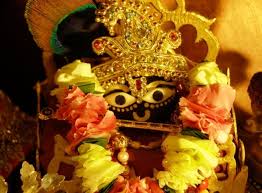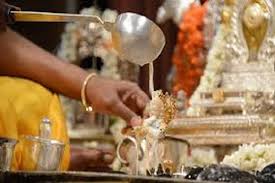
By Hare Krishna Devi Dasi
To see the true value of the Vedic social system, we need to understand it in its original form.
Thinkers throughout history—from Plato to Locke to modern political theorists—have always discussed the ideal form of social organization. Vedic literature also addresses this question and presents as the ideal the social system known as varnashrama, which divides society into four varnas, or occupational groups, and four ashramas, or stages of life. The four varnas are brahmanas (priests and teachers), kshatriyas (rulers and warriors), vaishyas (farmers and merchants), and shudras (laborers and artisans). The four ashramas are brahmacharya (student), grihastha (householder), vanaprastha (retired), and sannyasa (renounced).
When His Divine Grace A.C. Bhaktivedanta Swami Prabhupada carried the wisdom of Vedic literature to the West, he was hoping for nothing short of a spiritual revolution. He knew that without Krishna consciousness, people cannot be happy. An important part of his strategy to spread Krishna consciousness around the world was the revival of varnashrama. For many years, his followers have pondered his instructions about varnashrama, but so far have made little progress in fulfilling his vision for it.
Part of the problem may be confusion caused by apparently contradictory things Srila Prabhupada said about varnashrama.For example, in the Bhagavad-gita (2.31), Prabhupada refers to varnashrama as “man’s steppingstone for spiritual understanding.” But in other places he implies that varnashrama can become simply a materialistic arrangement for one social group to dominate another, and by reinforcing identity based on bodily categories, it creates a stumbling block on the path to spiritual advancement. In some instances Srila Prabhupada says that because Lord Krishna created varnashrama, it exists in all societies at all times. But Prabhupada also sets forth the establishment of varnashrama as a central goal of the Krishna consciousness movement. So is varnashrama an aid for spiritual elevation, or an instrument for social oppression? Does it exist throughout human society, and has it existed throughout history, or is it yet to be established?
To clarify these issues, we must recognize that the word varnashrama conveys similar but significantly different meanings in different contexts. Here are three basic types of varnashrama:
The original varnashrama is the division of society into four varnas and four ashramas that cooperate to satisfy the Supreme Lord. One’s varna is determined by one’s character, qualities, training, and work. The focus is spiritual advancement and spiritual satisfaction for each member of society.
This kind of varnashrama is a spiritual institution, just as a temple or a church becomes spiritual when used to glorify the Supreme Lord. The original varnashrama is sometimes referred to as daiva, or “divine,” varnashrama.
Materialistic varnashrama is the formal division of society into four varnas and four ashramas primarily to control society and increase the material well- being of certain groups. Typically, parentage and adherence to certain rituals determine varna, rather character and training. The hereditary caste system, a perversion of the original varnashrama, is in the category of materialistic varnashrama.
Spontaneous varnashrama is a “default” society that results because by nature people tend to divide into classes (the four varnas). Spontaneous varnashrama is devoid of a connection with the Supreme Lord and does nothing to promote spiritual progress.
To help us understand the kind of varnashrama Srila Prabhupada promoted, let’s look at these types of varnashramas more closely, beginning with the least spiritual type.
Spontaneous Varnashrama
In a June 1971 conversation with Professor Grigoriy Kotovsky in Moscow, Srila Prabhupada explained that because varnashrama is created by God, it exists in every society in every age:
In Bhagavad-gita [4.13] there is the statement catur-varnyam maya srishtam: this system was created by Vishnu [God]. So since varnashrama is a creation of the Supreme, it cannot be changed. It is prevalent everywhere. It is like the sun. The sun is a creation of the Supreme. The sunshine is there in America, in Russia, and in India—everywhere. Similarly, this varnashrama system is prevalent everywhere in some form or another. Take, for example, the brah-manas, the most intelligent class of men. They are the brains of the society. The kshatriyas are the administrative class; then the vaishyas are the productive class, and the shudras are the worker class. These four classes of men are prevalent everywhere under different names. Because it is created by the original creator, so it is prevalent everywhere, varnashrama-dharma. (Moscow, June 22, 1971)
Prabhupada is describing spontaneous varnashrama. People naturally tend to divide into the classes Prabhupada mentions, but there is no goal of using that social structure to serve the Lord.
Materialistic Varnashrama
In the Srimad-Bhagavatam (1.2.8) Suta Gosvami criticizes what we would call materialistic varnashrama: “The occupational activities a man performs according to his own position are only so much useless labor if they do not provoke attraction for the message of the Personality of Godhead.” This verse applies to the caste system of modern India. Although the caste system has some basis in religious tradition, for most of its practitioners the primary motivation is respectable social standing and material enjoyment, either in this life or the next, rather than service to the Supreme Lord.
Original Varnashrama
The great sage Parashara tells us how human society can satisfy the Supreme Lord, even though He is already full in all opulences:
varnashramacaravata
purushena parah puman
vishnur aradhyate pantha
nanyat tat-tosha-karanam
“The Supreme Personality of Godhead, Lord Vishnu, is worshiped by the proper execution of prescribed duties in the system of varna and ashrama. There is no other way to satisfy the Lord.” (Vishnu Purana 3.8.9)
Parashara Muni is referring to the original varnashrama system. Its essential feature is the deliberate organization of society so that the members of each class perform activities that help members of other classes in their spiritual advancement.
It is interesting to note that in the Vishnu Purana verse, Srila Prabhupada translates the word tosha as “satisfy” rather than “please.” I take this to mean that even though Krishna is pleased by the service of individual devotees, He is satisfied when everyone serves Him, because He knows that by serving Him all living entities will gain the greatest benefit. In daiva varnashrama everyone can serve the Lord, whatever his level of spiritual advancement, by following the principles Krishna sets forth in the Bhagavad-gita. In the third chapter, Krishna offers a description of work according to the principles of karma- yoga for those at the beginning level of spiritual advancement. As Krishna further explains in the twelfth chapter, those most captivated by material enjoyment and least able to follow regulations can make spiritual advancement by working for Him, offering Him the fruits of their labor, or at least renouncing the fruits of their labor for some charitable cause. Krishna emphasizes dutiful working according to one’s nature, with detachment from the fruits of labor. Workers in daiva varnashrama can gain further advancement because they work in the association of devotees and serve them.
Furthermore, everyone—brah-mana, kshatriya, vaishya, or shudra—is eligible to advance to the topmost spiritual platform by offering not just the fruits of activity but the very activity itself to the Lord in full Krishna consciousness. In the eighteenth chapter (verses 45-46), Krishna tells Arjuna, “By following his qualities of work, every man can become perfect. Now please hear from Me how this can be done. By worship of the Lord, who is the source of all beings and who is allpervading, a man can attain perfection through performing his own work.”
At this level, work is no longer counted as karma-yoga. Instead, it is considered bhakti-yoga, the highest stage of devotional service. Krishna informs Arjuna that if he acts on the platform of bhakti-yoga, he can “abandon all varieties of religion.” He has simply to perform his occupational duty as an offering of love to Krishna. He need not worry about all the injunctions contained in the “flowery words of the Vedas,” which concerned him in the opening pages of the Gita.
So only daiva varnashrama—the original system created by the Lord—can satisfy the Lord, because everyone can make spiritual progress. The more materially attached can learn to renounce the fruits of their labor. The more spiritually advanced can gain the highest spiritual ecstasy by offering their labor to the Lord in a spirit of loving devotion. The Lord is satisfied because He sees all His children advancing towards Him, each according to his highest capacity at the moment.
Those who have reached the top platform of pure devotional service, such as Arjuna [see sidebar: “Varnashrama and Karma”], are in fact transcendental to varnashrama, even though they still appear to be carrying out their varnashrama duties like anyone else. When engaged in pure devotional service by doing their work as bhakti-yoga, they are no longer on the material platform; they are in spiritual ecstasy.
Now that we have examined the three main types of varnashrama, let’s look at what we might call “Prabhupada’s varnashrama.”
Prabhupada’s Varnashrama
In the Ninth Canto of the Srimad-Bhagavatam (9.10.51), commenting on the varnashrama structure in Lord Ramacandra’s ideal kingdom, Srila Prabhupada writes: “Among the four yugas [ages]—Satya, Treta, Dvapara and Kali—Kali-yuga is the worst, but if the process of varnashrama-dharma is introduced, even in this age of Kali, the situation of Satya- yuga can be invoked. The Hare Krishna movement, or Krishna consciousness movement, is meant for this purpose.”
When Srila Prabhupada indicates that it is a mission of the Hare Krishna movement to establish varnashrama, he clearly does not mean the spontaneous varnashrama he told Professor Kotovsky was already existing all over the world. Nor does he mean the materialistic varnashrama of social prestige. Rather, Srila Prabhupada means the original varnashrama, the social organization that can satisfy the Supreme Personality of Godhead, Sri Krishna, because it provides for the spiritual advancement of all types of people. Nevertheless, the varnashrama Srila Prabhupada presents for his followers has certain prominent features especially meant to make it an effective tool for spreading Krishna consciousness in the present age.
Not by birth. First of all, Prabhupada emphasizes that varna designations should be determined by character, training, and work, not by birth. He cites the injunctions of such sages as Narada Muni to back up his position. Srila Prabhupada indicates that rather than society’s using birth as the criteria, a devotee’s teachers and guru can help determine the varna best suited for his specific nature and guide him to appropriate training for that varna.
Living off the land. In previous ages there was no need to specify this, but for our age Srila Prabhupada constantly urged devotees to “get all your necessities from the land” and to “grow your own food, produce your own cloth.” A society based on simple living and high thinking would favor spiritual advancement.
The Varnashrama college. Srila Prabhupada writes in The Srimad-Bhagavatam (9.10.50), “As there are schools and colleges to train students to become chemical engineers, lawyers, or specialists in many other departments of knowledge, there must be schools and colleges to train students to become brahmanas, kshatriyas, vaishyas, shudras, brahmacharis, grihasthas, vanaprasthas, and sannyasis.”
In March 1974 in Vrindavana, Prabhupada first outlined his ideas for a varnashrama college. Unlike traditional Vedic schools in which vaishyas, for example, were taught only scriptural studies (getting their vocational training at home), the varnashrama college would be for them somewhat like an agricultural university, in that there would be plenty of hands-on instruction, including practical subjects such as cow protection and food-crop cultivation. Also unlike traditional Vedic schools, even shudras would be included, although, again, their subjects would be centered on hands-on learning rather than formal classroom instruction. By training students in all the subjects necessary for the smooth functioning of a self- sufficient village, such a college would provide the foundation for setting up varnashrama.
Small-scale subsistence farming. Economic historians say that large-scale market-oriented farm production was unknown up to a couple hundred years ago. Today modern agribusinesses maintain large farms by capital- intensive techniques that rely heavily on tractors and petroleum, large pools of migrant workers, debt-intensive financing practices such as mortgages, government loans, and futures speculation in the commodity markets. In the model of varnashrama Srila Prabhupada presents, farmers don’t go into debt, because their local government gives them small plots to farm. Because these plots cannot be resold, farmers do not risk the unemployment that results when all the land ends up in the hands of the slickest businessman.
Economy based on agriculture and cow protection. Again, there was no need to emphasize this approach in traditional Vedic times, but for our modern times, when factory production and the service industry drive the economy, Srila Prabhupada often stressed the importance of resting our self-sufficient economy on agriculture and cow protection, or “living as Krishna lived.”
In the ideal varnashrama community, applying the principles of cow protection would mean that plowing should be done with oxen rather than tractors. The farmer effectively owns his means of production in a non-competitive system, and production is focused on home use and charitable giving, with only the excess being sold. Economic development would be highly localized, and short-distance shipping by ox-cart would re-place long-distance shipping by trucks and trains.
Mutual respect between varnas. In a 1975 conversation with an Indian governor in Vrindavana, Srila Prabhupada emphasized the deadly hazard of promoting contempt and hatred between the classes: “The shudras were hated like anything, so they became Mohammedans… . Now the result is that you and Pakistan go on fighting forever.” In contrast, Prabhupada stresses that in varnashrama everyone’s position is to be respected and appreciated because everyone is serving the Lord.
Protection for laborers. Prabhupada’s varnashrama does not sanction harsh treatment of workers and the hope of placating them with the promise of rewards in the next life. The other classes should treat their dependent workers kindly and fairly. To provide the needs for any society takes hard work, but Prabhupada condemned the hellish working conditions and social exploitation of modern industry: “The productive energy of the laborer is misused when he is occupied by industrial enterprises. Industry of various types cannot produce the essential needs of man, namely rice, wheat, grains, milk, fruits, and vegetables. The production of machines and machine tools increases the artificial living of a class of vested interests and keeps thousands of men in starvation and unrest. This should not be the standard of civilization.” (Srimad-Bhagavatam 1.9.26, Purport)
On one hand, industrial development subjects the laborer to ghastly working conditions; on the other hand, its machines threaten him with unemployment and misery. Prabhupada considered laboring-class unrest a clear symptom of poorly trained government leaders. The test of good government is whether it can make everyone happy (sarve sukhino bhavantu). In return for their labor, workers should be treated amicably and assured of food, shelter, the necessities of life, and protection for their families.
Using varnashrama as a preaching tool. Srila Prabhupada envisioned varnashrama as the only effective means of spreading Krishna consciousness to the world.
In big scale you cannot make all of them brahmanas or sannyasis. No. That is not possible. This is small scale. What percentage of people of the world are we attracting? Very insignificant. But if you want to make the whole human society perfect, then this Krishna consciousness movement should be introduced according to Krishna’s instructions—if you want to do it in a large scale for the benefit of the whole human society. Now we are picking up some of them, the best. That is one thing. But Caitanya Mahaprabhu said para-upakara. Why only a certain section should be picked up? Let the whole mass of people get the benefit of it. But then it is required to be systematic. Therefore, we have to introduce this varnashrama- dharma. It must be done perfectly. It is possible, and people will become happy.” (Mayapur, February 14, 1977)
The varnashrama model that Srila Prabhupada presents is specifically adapted to the present age and focused on attaining the highest level of love of Godhead for all. Even if we can’t come to Srila Prabhupada’s ideal standards at once, we can take steps toward varnashrama that will provide the momentum to reach the goal. Faced with the inevitable difficulties of the present age, many people will then have the chance to be attracted to self-sufficient varnashrama villages, centered on the worship of Lord Krishna.
Lord Chaitanya and the Caste System
Materialistic varnashrama was practiced at least as far back as five hundred years ago, when Lord Krishna appeared on earth as Sri Chaitanya Mahaprabhu. The hereditary brahmanas of the day were anxious to protect their social standing and expected others to observe their social customs. Lord Chaitanya, however, saw that such customs promoted social prestige and not spiritual advancement, so He defied them again and again.
The caste brahmanas believed that a person working in a shudra’s occupation could not become a spiritual master. Since Ramananda Raya was a government employee, they considered him a shudra. The Lord discounted Ramananda Raya’s nominal social position and took spiritual instruction from him because Ramananda Raya was a devotee on the highest level of Krishna consciousness. The caste brahmanas also considered anyone from a Muslim family unfit to enter the temple at Puri and see the Deity form of Krishna as Lord Jagannatha. But Lord Chaitanya, who is actually the same as Jagannatha, visited the great devotee Haridasa Thakura every day, even though Haridasa came from a Muslim family.
The hereditary brahmanas of Lord Chaitanya’s day were obsessed with dozens of rules and strictures drawn from the idea that a brahmana would jeopardize his position by eating with or even touching anyone from outside the brahmana caste. Lord Chaitanya dismissed such materialistic conceptions, however, accepting invitations to eat with devotees in the lowest social position. He freely touched and embraced sincere worshipers of the Lord, challenging the degraded, materialistic system of varnashrama.
The Natural System for Civilized Life
Human society all over the world is divided into four castes and four orders of life. The four castes are the intelligent caste, the martial caste, the productive caste, and the laborer caste. These castes are classified in terms of one’s work and qualification and not by birth. Then again there are four orders of life, namely the student life, the householder’s life, the retired life, and the devotional life. In the best interest of human society there must be such divisions of life; otherwise no social institution can grow in a healthy state. And in each and every one of the above-mentioned divisions of life, the aim must be to please the supreme authority of the Personality of Godhead. This institutional function of human society is known as the system of varnashrama-dharma, which is quite natural for the civilized life.
The varnashrama institution is constructed to enable one to realize the Absolute Truth. It is not for artificial domination of one division over another. When the aim of life, a i.e., realization of the Absolute Truth, is missed by too much attachment for indriya-priti, or sense gratification, as already discussed hereinbefore, the institution of the varnashrama is utilized by selfish men to pose an artificial predominance over the weaker section. In the Kali-yuga, or in the age of quarrel, this artificial predominance is already current, but the saner section of the people know it well that the divisions of castes and orders of life are meant for smooth social intercourse and high-thinking self-realization and not for any other purpose.
Herein the statement of Bhagavatam is that the highest aim of life or the highest perfection of the institution of the varnashrama-dharma is to cooperate jointly for the satisfaction of the Supreme Lord. This is also confirmed in the Bhagavad-gita (4.13).—Srimad- Bhagavatam 1.2.13, Purport
Karma and VarnashramaVarnashrama Curriculum: A Sampler of Courses
Students of Krishna consciousness know that the ideal life is a fully spiritual one—a life of devotional service to Krishna. They know that activities such as hearing about Krishna, chanting Hare Krishna, and so on, are purely spiritual and therefore yield no material reaction, or karma. But what about the activities of varnashrama or, specifically, our varnas, or occupations? Aren’t they material and therefore karmic?
Lord Krishna teaches in the Bhagavad-gita that whether a person’s work is spiritual or material depends mainly on his consciousness. Krishna also describes three kinds of action: karma, vikarma, and akarma. (Bhagavad-gita 4.17) Let’s examine these and related terms in light of the different kinds of varnashrama.
Karma can mean any activity—prescribed, sinful, or transcendental. But a more specific definition is work prescribed by scripture for one’s varna. Such work brings material rewards. The work of persons who follow the materialistic system of varnashrama is karma.
Vikarma means work against the laws of God, and it brings punishment. Much work under a spontaneous system of varnashrama falls into the category of vikarma.
Akarma means work as an offering to Krishna. Such work produces no material reward or punishment but leads to spiritual liberation. Akarma activities are the goal of the original, or daiva, varnashrama system.
Krishna recommends akarma (Bg. 3.9): “Work done as a sacrifice for Vishnu has to be performed; otherwise work causes bondage in this material world. Therefore, O son of Kunti, perform your prescribed duties for His satisfaction, and in that way you will always remain free from bondage.”
Karma-kanda refers to acts performed under Vedic injunctions for promotion to higher material planets. Such acts are part of materialistic varnashrama.
Yoga is a cognate of the English word yoke. A yoke links two oxen, and yoga links the individual living being and the Supreme Personality of Godhead. Within the framework of daivavarnashrama, different forms of yoga help people on the spiritual path.
Karma-yoga means offering the fruits of one’s activities to the Lord. Common in daiva varnashrama, karma-yoga marks the beginning of spiritual life.
Jnana-yoga means to offer the results of one’s intellectual activities to the Lord by trying to understand Him. It is a step in spiritual development and is part of daiva varnashrama.
Bhakti-yoga means to offer one’s activities to the Lord in complete love and devotion, free of desire for material benefit. Bhakti-yoga is the summit of all yogas because it is completely akarma, or without material results. The goal of daiva varnashrama is to gradually elevate all citizens to bhakti-yoga.
To understand the relationship between karma and varnashrama, we must understand that similar activities may be spiritually dissimilar. In Raja Vidya Srila Prabhupada writes, “On the Battlefield of Kurukshetra, Arjuna engaged in fighting, and those on the side of Duryodhana engaged in fighting. We must understand how it is that Arjuna is free from reaction whereas Duryodhana is not. Externally we can see that both parties are engaged in fighting, but we should understand that Arjuna is not bound by reactions because he is fighting under the order of Krishna.”
Finally, we must understand that within daiva varnashrama our consciousness—not our varna or ashrama—determines our spiritual standing. Srila Prabhupada wrote to a disciple, “Krishna says in the Bhagavad-gita that anyone who surrenders unto Me, whether a woman, shudra, vaishya, etc., they all attain the highest perfection of bhakti-yoga—not that now I am grihastha, I am doing karma-yoga, or now I am vanaprastha, I am doing sankhya-yoga. This is all nonsense.”
In considering courses for each varna, I asked myself, What kind of knowledge is needed to build a self- sufficient spiritual community that can encourage and protect its citizens? I also looked at the qualities and duties of the different varnas as described in scripture and thought about what kind of training would best help each varna develop. Finally, I looked at Prabhupada’s descriptions of training for the different varnas.
Brahmanas
Scriptural studies
Prabhupada’s instructions on varnashrama
Teacher training
Mental health and learning disabilities
Ayurvedic medicine
Herbal healing
Deity worship in the rural community
Kings in the Bhagavatam
Kshatriyas
Religion
Politics
Social order (Sociology)
Economics
Military arts
Ethics and morality
The sciences
Management
Devotional service
Some subjects require further consideration. For example, Prabhupada suggests training in the sciences for kshatriyas, but science is a broad field. Should kshatriyas learn nuclear physics and synthetic chemistry? Or would agronomy, ecology, sanitation, and dairy science be more valuable to the leader of a self-sufficient community?
Srila Prabhupada said that a varnashrama community would consist of just a few brahmanas and kshatriyas. Most citizens would work as vaishyas or shudras.
Vaishyas
Fundamentals of ecology and permaculture
Agronomy
Developing a resource inventory
Basic farming practice
Fundamentals of animal health and reproduction
Krishna’s example of cow protection
Basic cow care
Working with oxen
The herd sire
Pasture management
Food grain production and processing
Fiber plant production and processing
Economics
Orchard skills
Forestry
Since those working in the shudravarna support the other members of society, their curriculum would need to be accordingly broad. Many courses would emphasize hands-on instruction to build expertise in practical skills.
Sudras
Technical drawing
Implement design and construction
Woodworking and carpentry
Blacksmithing
Cart and wagon design and construction
Road building and excavating
Energy-efficient house construction
Papermaking
Shorthand
Water supply and sanitation
Energy forms: Potentials and pitfalls
Performance arts for preaching
Visual arts for preaching
Small-scale textile production
Vegetable dyes
As in any small college, students majoring in different varnas would have ample opportunity to interact with each other, and those interactions would foster a spirit of appreciation, cooperation, and community. Students in different varnas might study some of the same courses. For example, for a successful self-sufficient community both vaishyas and kshatriyas should have a basic understanding of soil science and soil conservation, taught in an agronomy course. As the teachers of the community, brahmanas would specialize in different areas of knowledge. So besides brahminical courses, brahmanas would study subjects primarily meant for kshatriyas, vaishyas, or shudras.
All students would take some core subjects, such as an elementary course in cow protection and a course on community development. Most important, to create a common goal and vision for a varnashrama community, all students would come together to study Srila Prabhupada’s instructions on varnashrama and farm community development.
Steps We Can Take Now: Study and Discuss Srila Prabhupada’s InstructionsDevelop Training In Self-Sufficiency Skills
The more we can get together to study and discuss Prabhupada’s instructions on the pitfalls of the materialistic varnashrama systems and the benefits of the original system, the better our chances of avoiding mistakes so we can build a system that will help people in their spiritual lives. ISKCON centers can set up weekly classes to study Prabhupada’s instructions on varnashrama.
Even though ISKCON may not have a full-fledged varnashrama college, it can still offer training in some of the subjects needed to help self-sufficient communities develop. Prabhupada told devotees in Mauritius that others would be attracted by their “training power.” Classes in gardening, carpentry, and community relations, for example, can teach valuable skills while providing opportunities to tell others about Krishna conscious philosophy.
Support Cow Protection
Cow protection is an important duty of the vaishya class, of which businessmen are a part. Although properly caring for cows in a modern industrial city is impossible, men and women in business can fulfill their responsibility by supporting cow protection in ISKCON farm communities. They can also visit the farms to see how the needs of the cows are being met and the cowherds trained and maintained.
Support Krishna Conscious FarmersShow Appreciation For the Service of Others
“Anything grown in the garden is a hundred times more valuable than if it is purchased from the market,” Srila Prabhupada told disciples in France. What could be a more opulent offering to the Lord than fruits, vegetables, and grains grown by devotee farmers with love and devotion for Him—without the use of poisonous sprays or slaughterhouse by-products such as bloodmeal and bonemeal, popular with most other organic farmers? Devotee farmers who use a rototiller to grow tomatoes, beans, and squash for the market may not be quite up to the ideal of Prabhupada’s ox-powered subsistence grain farmer, but certainly to be working on the land for Krishna is a big step in the right direction. If such farmers are supported, their children might become inspired to take care of the cows and become Krishna conscious ox-power farmers.
One of the most dangerous aspects of any class system is the fostering of feelings of contempt between classes. This threatens social harmony and reinforces materialistic class identity, stunting spiritual growth. To move toward Prabhupada’s varnashrama system, we must practice showing our appreciation when others serve the Lord by their occupational duty, whether by dressing the Deity, managing the temple accounts, raising Krishna conscious children, acting as temple president, growing vegetables for the Lord, or putting in a new electrical system. If we look for the connection with Krishna, we lose our materialistic vision of others and reinforce their identity as devotees. Also, we can encourage them in their service by providing opportunities for additional training in their specialty.














































